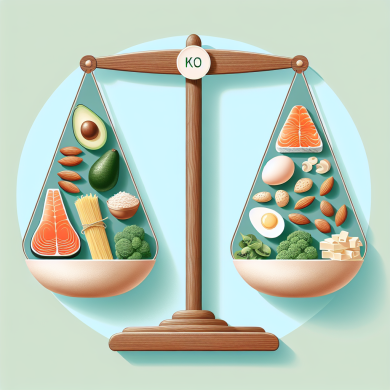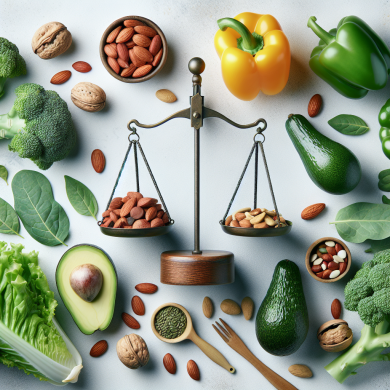### Keto Flu: Symptoms and Effective Remedies
### Keto Flu: Symptoms and Effective Remedies
The ketogenic (keto) diet has gained widespread popularity for its potential to aid in weight loss, improve mental clarity, and increase energy levels. By significantly reducing carbohydrate intake and increasing fat consumption, the body enters a metabolic state known as ketosis, where it burns fat for fuel instead of glucose. However, transitioning to this diet can sometimes lead to a collection of symptoms commonly referred to as the “keto flu.” Understanding these symptoms and knowing how to effectively manage them can be crucial for those embarking on a keto journey. This article seeks to provide a comprehensive look at the keto flu, its symptoms, and effective remedies to alleviate its effects.
### What is Keto Flu?
Keto flu is a term used to describe a set of symptoms that some individuals experience when they begin the ketogenic diet. As the body adapts to a new way of obtaining energy, it undergoes several physiological changes. This transition period can cause temporary discomfort, often resembling flu-like symptoms. While not everyone will experience keto flu, for those who do, it can be an unsettling start to the diet.
### Symptoms of Keto Flu
The symptoms of keto flu can vary from person to person, both in type and severity. They typically appear within the first few days of starting the diet and can last from a few days to a week or more. Common symptoms include:
#### Fatigue and Weakness
One of the most reported symptoms is a general feeling of fatigue and weakness. As the body switches from burning glucose to fats, it can take time for energy levels to stabilize, leading to feelings of lethargy and reduced stamina.
#### Headache
Headaches are another prevalent symptom during the initial stages of the keto diet. Dehydration and electrolyte imbalances, often caused by the diuretic effect of reduced carbohydrate intake, can contribute to this discomfort.
#### Nausea and Digestive Issues
Some people may experience nausea, constipation, or diarrhea when starting the keto diet. These symptoms are typically temporary and can be attributed to the body’s adjustment to higher fat consumption and changes in gut microbiota.
#### Irritability and Mood Swings
The reduction in carbohydrate intake can affect serotonin levels, leading to irritability and mood swings. Carbohydrates play a role in the production of serotonin, a neurotransmitter that regulates mood, so a sudden decrease can have noticeable effects.
#### Difficulty Sleeping
Changes in diet can also impact sleep patterns. Some individuals may experience difficulty falling asleep or staying asleep, which can exacerbate feelings of fatigue.
#### Muscle Cramps and Soreness
Electrolyte imbalances, particularly low levels of sodium, potassium, and magnesium, can lead to muscle cramps and soreness. These symptoms are often a result of the increased excretion of electrolytes during the initial phase of the diet.
#### Brain Fog
Many people report experiencing “brain fog,” characterized by difficulty concentrating, confusion, and forgetfulness. This can be attributed to the brain adjusting to a new energy source, as it transitions from glucose to ketones.
### Effective Remedies for Keto Flu
While keto flu can be uncomfortable, there are several strategies that can help alleviate symptoms and ease the transition into ketosis.
#### Stay Hydrated
Dehydration is a common issue during the early stages of the keto diet. Drinking plenty of water is crucial to help the body adjust and to reduce the risk of dehydration-related symptoms such as headaches and fatigue. Aim for at least 8-10 glasses of water per day, and consider increasing your intake if you are active or live in a hot climate.
#### Replenish Electrolytes
Electrolyte imbalances can exacerbate keto flu symptoms. To combat this, ensure that you are getting adequate amounts of sodium, potassium, and magnesium in your diet. Adding a pinch of salt to your meals or drinking broth can help with sodium levels, while leafy greens, avocados, and nuts are excellent sources of potassium and magnesium.
#### Gradual Transition
Instead of jumping straight into a strict keto diet, consider easing into it gradually. Slowly reducing carbohydrate intake over a week or two can help the body adjust more smoothly and minimize the shock to your system, potentially reducing the severity of keto flu symptoms.
#### Prioritize Sleep
Ensuring that you get adequate rest is crucial during the transition phase. Aim for 7-9 hours of quality sleep per night to help your body recover and adapt. Creating a relaxing bedtime routine and maintaining a consistent sleep schedule can improve sleep quality.
#### Consume Sufficient Fat
One of the cornerstones of the keto diet is increasing fat intake. Ensuring that you consume enough healthy fats can help your body enter ketosis more efficiently and maintain energy levels. Incorporate sources of healthy fats such as olive oil, avocado, nuts, seeds, and fatty fish into your meals.
#### Exercise Moderately
While regular exercise is beneficial for overall health, it’s important to listen to your body during the initial stages of the keto diet. Intense exercise may worsen fatigue and other symptoms. Instead, opt for light to moderate activities such as walking, yoga, or cycling to help maintain energy levels without overexerting yourself.
#### Manage Stress
Stress can exacerbate keto flu symptoms, so finding ways to manage it is important. Techniques such as deep breathing, meditation, or gentle yoga can help reduce stress levels and support overall well-being during the transition period.
#### Increase Fiber Intake
Some people may experience digestive issues during the initial phase of the keto diet. Increasing fiber intake through low-carb vegetables like broccoli, spinach, and cauliflower can help maintain digestive health and alleviate symptoms such as constipation.
#### Listen to Your Body
It’s important to remember that everyone’s experience with keto flu is different. Pay attention to your body’s signals and adjust your diet and lifestyle accordingly. If symptoms persist or become severe, it may be worth consulting a healthcare professional or nutritionist for personalized guidance.
### Conclusion
Keto flu is a common, albeit temporary, hurdle for many individuals starting the ketogenic diet. While the symptoms can be uncomfortable, understanding and implementing effective remedies can help ease the transition into ketosis. Staying hydrated, replenishing electrolytes, gradually reducing carbohydrate intake, and prioritizing rest are all strategies that can support the body as it adapts to a new metabolic state. By taking these steps, individuals can better navigate the initial challenges of the keto diet and set themselves up for long-term success on their keto journey. Remember, the key is to listen to your body and make adjustments as needed to ensure a smooth and sustainable transition to this low-carb, high-fat lifestyle.















Add comment